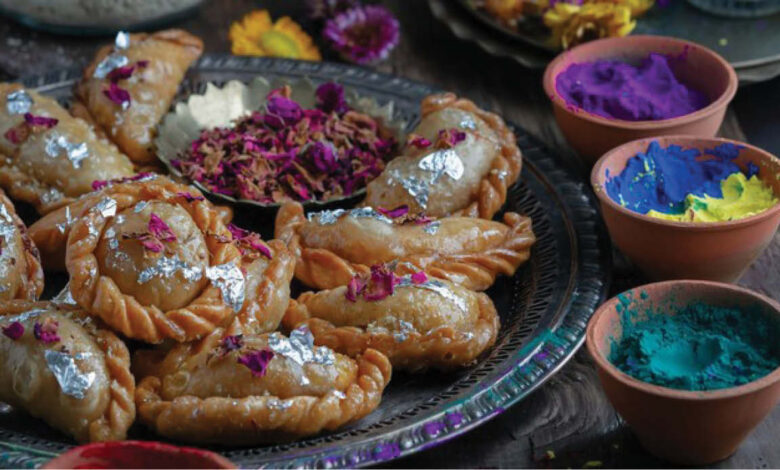Centuries-old treat adds sweetness to India’s most colorful festival
Indian women spend hours in the kitchen to make the sweet and crispy treat known as gujiya

Patna, Bihar
As millions of people celebrate Holi, the festival of colors, on Monday, Indians are also serving the sweet fried pastry known as gujiya at their tables to mark the arrival of spring.
Crispy and flaky on the outside, gujiya is a crescent-shaped pastry with a soft and sweet filling including coconut, cashews and khoya, or milk solids. In India, the crumbly treat is a hallmark of Holi.
Every year, Holi starts on the evening of the last full moon in the lunar month of Phalguna. The festival that also symbolizes the triumph of good over evil sees people smearing bright colors on friends and family, lighting bonfires and dancing to traditional music.
It is also the flavors of gujiya that remind people of Holi festivities.
“Holi festival is incomplete without gujiya and will lose its charm if this sweet dish is not there,” Ambrish Kumar, a political journalist and food show host, told.
“This is a dish which until a decade ago was only prepared at home and was not available in restaurants.”
The sweet pastry varies in different states, each version with its own dough, fillings and names. While it is known as gujiya in the northern states like Rajasthan and Uttar Pradesh, people in other parts of the country have different names: it is pedakiya in Bihar, ghughra in Gujarat and somasi in Tamil Nadu.
Though there is no definitive history to gujiya or its association to Holi, Kumar said it may have been derived from the Turkish baklava or the Central Asian samsa, the predecessor to a samosa. While the baklava may have been brought by Muslim traders in the 13th or 14th centuries, samsa was likely brought by chefs employed in the kitchens of the Mughal Empire around the 15th or 16th centuries.
“Samosa came from the Arab world with the Mughals and it is filled with meat and fried in the same way gujiya is done … There is also a similarity between Turkish baklava and gujiya,” he said.
The preparation at home is what makes the dish important, Kumar added, as women would often make extra efforts to prepare the festive treat.
For 69-year-old Kanchan Mala, gujiya has been part of her Holi routine for decades.
“My mother introduced me to this dish when I was a kid and I have been making this dish every Holi for over 50 years,” Mala told.
Since her marriage in the late 1960s, Mala has been spending hours with other women in her extended family to make gujiya for Holi, as it was the only dish that they cannot buy in the market. But she noticed how much the times have changed now.
“Girls are getting educated and professionally active, they don’t have time to spend hours preparing the dish. They now order the dish from outside,” said Mala, who is from Mokama town in Bihar.
“Despite the change, the primacy of gujiya remains intact in the festival. We still serve gujiya to our guests when they come to play Holi.”
Kiran Raj is also among those intent on keeping gujiya at the table for Holi, as she has prepared the dish for the last four decades.
“So long I am active, I will keep on making the dish during the festival,” Raj told.
“But whether you prepare it at home or buy it from outside, gujiya’s relevance during Holi will remain intact. Gujiya appears on the horizon with the onset of Holi and disappears with the festival. This is the tradition and it will continue.”



